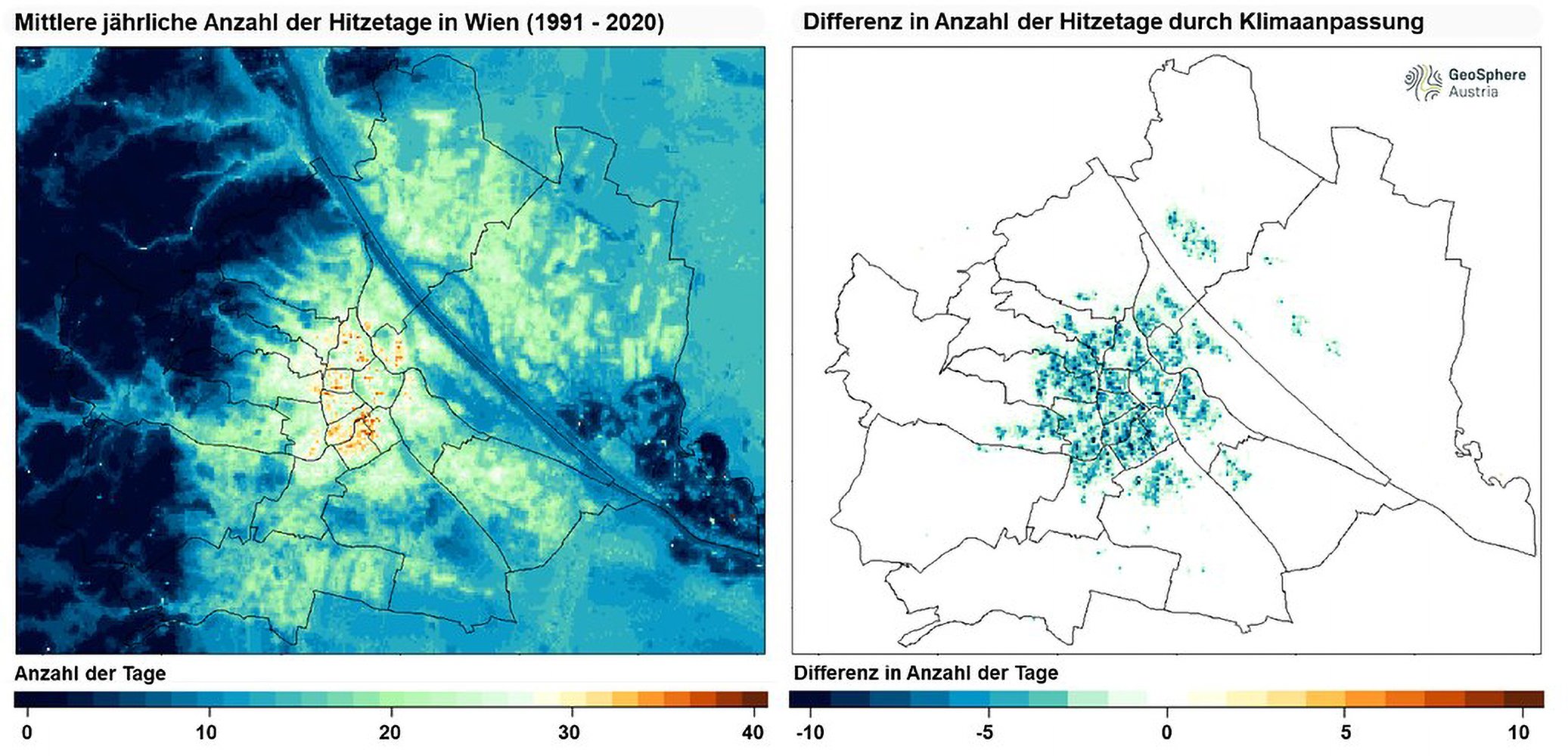Nature-based Solutions are effective against heat stress in Vienna
Studies by GeoSphere Austria and the AIT Austrian Institute of Technology show that realistic, nature-based measures – such as planting additional trees, creating new green spaces and unsealing surfaces – can significantly reduce heat stress in densely built-up areas in Vienna.
The results of the study ‘Socially equitable climate risk management of urban heat’ were recently published in the journal ‘npj Urban Sustainability’.
As part of the WWTF-funded SENSUS project, the research team used high-resolution urban climate models to investigate the effect of measures to cool densely built-up districts of Vienna under various future scenarios. In addition to temperature, humidity and wind, these models also take into account building density, terrain and land use in order to realistically assess the effects of planned urban development measures before they are implemented.
The research team consisted of BOKU University (lead), GeoSphere Austria, TU Vienna, AIT Austrian Institute of Technology (AIT), Joanneum Research Graz and the University of Warsaw.
Using a microclimate model, the AIT created a simulation with a resolution of two metres for a densely built-up urban area in Vienna in order to map the building structure as accurately as possible. First, the temperature on a summer day was calculated in the current situation and then compared with adaptation measures often implemented in Vienna, such as additional trees, unsealed car parks, green roofs and facades, light-coloured paving stones and mist showers.
The result: locally, under the assumptions made, a reduction of up to 2 °C is possible – comparable to an increase in altitude of around 300 metres. Nature-based measures such as tree planting and unsealing proved to be particularly effective. GeoSphere Austria then applied these measures to all densely built-up areas in Vienna and simulated the cooling effect using the urban climate model for the entire city.
‘The results clearly show that nature-based and realistically implementable solutions – such as more trees, additional green spaces and unsealing – can significantly reduce urban heat stress in Vienna,’ says urban climate expert Maja Zuvela-Aloise from GeoSphere Austria. ‘For example, the current number of hot days would decrease by more than 10 per cent and the effects of global warming would be significantly mitigated in the coming years.’
In densely built-up districts of Vienna, there were an average of 78 summer days (at least 25 °C) and 24 hot days (at least 30 °C) per year in the recent past, in the climate period from 1991 to 2020.
The urban climate model shows in its simulation that if densely built-up districts are comprehensively equipped with realistically possible trees, green spaces, green roofs, unsealing and lightening of surfaces, an average of 4 fewer summer days (-5 per cent) and 3 fewer heat days (-12 per cent) per year can be achieved. However, these are only average values; in individual districts, the calculations showed a reduction of up to 15 summer days and 13 hot days.
In the RCP8.5 climate scenario (unchecked rise in greenhouse gas emissions), an average of around 100 summer days and 40 heat days are expected in the densely built-up districts of Vienna at the end of this century (climate period 2071-2100). With comprehensive greening, there would be an average of 3 fewer summer days and 3 fewer hot days, and in some districts even around 14 fewer summer days and 14 fewer hot days.
The most effective single measure identified in the study was increasing the amount of tree cover. In comparison, additional green roofs made a significantly smaller contribution to cooling, as the potential area for green roofs in the existing building structure is limited.
The study only considered measures that can actually be realistically implemented in Vienna's dense urban environment, such as new rows of trees along streets, additional parks and green roofs. Technical solutions such as water misting or sun sails were investigated in small-scale simulations and showed less cooling effect than nature-based measures.
Translated with DeepL.com (free version)


